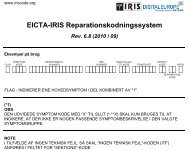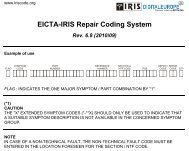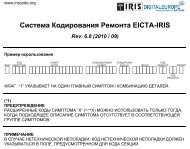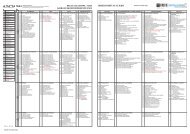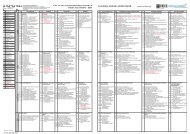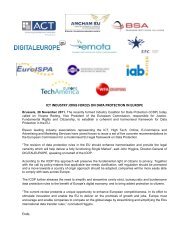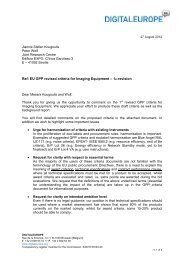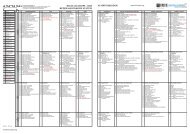Standardized DVB-T2 RF specifications - DigitalEurope
Standardized DVB-T2 RF specifications - DigitalEurope
Standardized DVB-T2 RF specifications - DigitalEurope
Create successful ePaper yourself
Turn your PDF publications into a flip-book with our unique Google optimized e-Paper software.
5- MAXIMUM RECEIVER INPUT LEVEL<br />
The receiver should be able to handle <strong>DVB</strong>-<strong>T2</strong> signals up to a level of -25 dBm while<br />
providing the specified performance. Maximum level for ATV/DTV interfering signals is<br />
-25dBm.<br />
6- C/N PE<strong>RF</strong>ORMANCE CALCULATION METHOD FOR AWGN AND 0dB ECHO<br />
The <strong>DVB</strong>-<strong>T2</strong> implementation lines in the A133 Blue Book (ref.1) show two sets of simulations<br />
in tables 44 and 47. The simulations in table 44 represent the absolute best possible<br />
theoretical performance assuming a theoretical receiver that can perform “Genie Aided” demapping<br />
(an infinite number of de-mapping iterations). Table 44 also assumes an infinite<br />
number of LDPC iterations. Clearly neither of these two assumptions is valid for a real<br />
receiver due to finite limits on clock rate and silicon area. In contrast table 47 shows<br />
simulated performance for a receiver using a non-iterative de-mapper and 50 LDPC<br />
iterations (see also section 10.5.5 of ref.1). Table 47 is used to calculate the required AWGN<br />
C/N in this specification. However because table 47 does not include 0dB echo simulations<br />
but table 44 does, both these sets of simulation results are used derive the required C/N<br />
performance in 0dB echo channels as shown below.<br />
6- 1- AWGN C/N calculation<br />
C/N = (C/N)table_47 + A + Pboost+ IL + Dpx, where<br />
(C/N)table_47 = AWGN C/N for post LDPC BER=10 -6 (table 47 of ref.1)<br />
A = additional C/N required to reach post LDPC BER=10 -7 – around 0.1dB<br />
Pboost= correction for pilot boosting (from table 46 of ref.1)<br />
IL = loss due to real channel estimation, imperfect LDPC decoding and other<br />
imperfections not considered part of the back-stop noise. This is derived from ref.1<br />
and includes a small additional allowance for receiver synchronization, fixed point<br />
losses etc. For the E-book specification IL varies with pilot pattern as follows 2.5dB<br />
(PP1-PP2), 2.0dB (PP3-PP4), 1.5dB (PP5-PP7).<br />
Dpx= additional C/N term corresponding to a back-stop noise level at -33 dBc. This<br />
term is derived by first calculating the sum of all terms except Dpx and then checking<br />
how much C/N degradation is caused by the -33 dBc backstop noise level. The term<br />
Dpx is identical to this degradation.<br />
6- 2- 0dB echo C/N calculation<br />
C/N0db = (C/N)table_47 +[END of 0dB echo channel] + A + Pboost+ IL+IL(CR) + Dpx<br />
= (C/N)table_47 +[(C/N)0dB_table_44 – (C/N)AWGN_table_44] + A + Pboost+ IL+IL(CR) + Dpx, where<br />
(C/N)table_47, A, Pboost, IL and Dpx as defined above for the AWGN C/N calculation<br />
END = effective noise degradation (difference between 0dB echo and AWGN C/N)<br />
>>4 of 27



